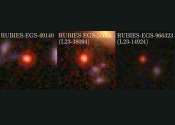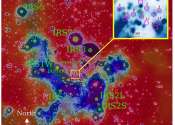Tiny bright objects discovered at dawn of universe baffle scientists
A recent discovery by NASA's James Webb Space Telescope (JWST) confirmed that luminous, very red objects previously detected in the early universe upend conventional thinking about the origins and evolution of galaxies and ...









